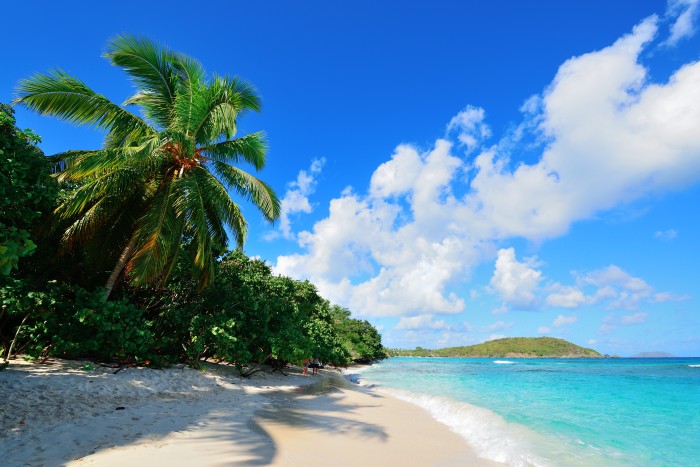Travel Tips
What are the most popular dates for traveling to the Caribbean
The Caribbean has long been one of the world’s most sought-after vacation destinations. With its turquoise waters, lush landscapes, and rhythm-filled culture, it’s no surprise that millions of travelers choose this tropical region every year. However, not all dates are created equal when it comes to visiting the Caribbean. From high tourist seasons filled with festivities to quieter months ideal for relaxation, understanding the best time to visit can make your trip even more memorable.
Understanding the Caribbean Seasons
Before choosing your travel dates, it’s essential to understand the Caribbean’s climate and tourist patterns. The region enjoys a warm tropical climate year-round, but there are clear differences between the dry and wet seasons. The dry season, from December to April, is considered the best time to visit for sunny skies, calm seas, and vibrant events. On the other hand, the wet season, from June to November, brings more humidity and occasional hurricanes, although it’s also when you’ll find more affordable travel deals.
Despite the weather differences, every season has its charm. While December through April sees the largest influx of visitors escaping colder climates, the rest of the year attracts those looking for tranquility, budget-friendly accommodations, and fewer crowds. Understanding what you want from your Caribbean experience is the first step in choosing your ideal travel window.
Peak Travel Dates and Events
1. Winter Holidays (December to Early January)
This period marks the absolute peak of Caribbean tourism. From Christmas through New Year’s, the islands come alive with lights, music, and celebrations. Travelers from North America and Europe flock to the Caribbean to escape the winter chill, filling resorts and cruise ships to capacity.
Hotels and flights are often at their most expensive, but the experience is worth it. You’ll find vibrant street parades in the Dominican Republic, fireworks in Jamaica, and beach parties in Puerto Rico. It’s a festive, lively time when the region’s warmth perfectly complements the holiday spirit.
2. Spring Break (March to Mid-April)
Another highly popular window for Caribbean travel is during spring break. College students and families alike head to the islands for sun-soaked getaways. Destinations such as Cancun (technically in the Caribbean region), the Bahamas, and Barbados are hotspots for those seeking lively atmospheres, beach parties, and cultural festivals.
The weather during spring break is nearly perfect—dry, warm, and breezy. However, accommodations should be booked months in advance as the demand is extremely high. For travelers seeking peace and quiet, smaller islands like Saint Kitts or Grenada may offer a more relaxed spring experience.
3. Carnival Season (February to March)
If your goal is to experience Caribbean culture at its most vibrant, Carnival is the ultimate time to visit. The celebration differs by island—Trinidad and Tobago’s Carnival is perhaps the most famous, filled with colorful costumes, energetic soca music, and endless dancing.
In the Dominican Republic, the parades of La Vega are legendary, while Barbados and St. Lucia offer their own unique versions. Carnival season offers travelers an immersive cultural experience unlike any other, blending African, European, and indigenous traditions in a dazzling display of creativity and joy.
4. Summer (June to August)
While summer overlaps with the wet season, it remains a popular time for family vacations due to school holidays. Temperatures are higher and rain showers more common, but they rarely last all day. Moreover, summer brings local festivals and food fairs where you can savor authentic Caribbean cuisine and mingle with residents.
It’s also the time when travelers can find the best discounts on hotels and flights. For budget-conscious visitors, summer offers an ideal balance between affordability and adventure.
5. Early Fall (September to October)
Though this is the low season, it’s not without its appeal. Many couples choose this period for romantic getaways or honeymoons, attracted by quiet beaches and low rates. Some resorts offer all-inclusive deals at a fraction of winter prices. However, this is also the peak of hurricane season, so travel insurance and flexible plans are strongly recommended.
6. Late Fall (November)
By November, the Caribbean begins to transition back into its dry season. Temperatures remain warm, and the rain gradually subsides. This shoulder season is perfect for travelers who want pleasant weather without the heavy crowds. It’s also when many islands start their holiday preparations, lighting up towns and beaches for the upcoming Christmas festivities.
Regional Differences
The Caribbean is vast and diverse, so the best travel dates can vary depending on the island.
- The Bahamas enjoy a mild winter climate, making them ideal for year-end vacations.
- Jamaica and Barbados are year-round destinations but are especially popular from December to April.
- Puerto Rico and Cuba attract more visitors in winter and spring, thanks to their rich cultural events and historical landmarks.
- Aruba, Curaçao, and Bonaire lie outside the main hurricane belt, making them excellent options even during the wet season.
If flexibility is possible, researching each island’s specific event calendar can help you align your visit with local celebrations such as music festivals, independence days, or food fairs.
Typical Activities
The Caribbean isn’t just about sunbathing and cocktails by the beach—it’s a region bursting with activities that cater to every type of traveler. Whether you’re an adventurer, a foodie, or simply someone looking for a good time, you’ll never run out of things to do.
Top destinations include Atlantis Paradise Island in the Bahamas, famous for its expansive gaming floor and slot machines, and The Casino at Hilton Aruba, known for roulette, blackjack, and poker tournaments. Jamaica’s Montego Bay casinos offer an exciting mix of table games and lively nightlife, while St. Maarten’s casinos provide a sophisticated experience for both casual players and high rollers. While on holiday, many people search for online slots during the day as they look to unwind by the pool or at the beach, and in the evening, the casinos mentioned are always busy.
During the day, snorkeling and scuba diving remain top attractions. The Caribbean’s coral reefs are among the most biodiverse in the world, offering a chance to swim alongside colorful fish, turtles, and rays. Adventurers can also try sailing, windsurfing, or exploring hidden caves and waterfalls deep within tropical forests.
For culture lovers, visiting local markets and historical towns is a must. You can learn about colonial history, sample rum at distilleries, and dance to reggae, calypso, or salsa rhythms. And if relaxation is your goal, many travelers find peace in eco-lodges nestled in nature reserves or by simply watching the sunset over turquoise horizons.
Budget Considerations by Season
One of the most important factors influencing travel dates is budget. Prices fluctuate significantly throughout the year.
- High Season (December–April): Expect the highest prices. Flights, hotels, and tours can cost up to twice as much as in low season. However, you’ll enjoy perfect weather and endless activities.
- Shoulder Season (May and November): This is often the sweet spot. Fewer tourists, pleasant weather, and moderate prices make it a balanced choice for most travelers.
- Low Season (June–October): The most budget-friendly option. While there’s a higher chance of rain, many luxury resorts offer discounts of up to 40%, and flights are often cheaper.
Booking early is essential during peak dates, especially for Christmas, New Year’s, and Carnival. Some travelers book up to six months in advance to secure the best deals.
Tips for Choosing the Right Dates
To make the most out of your Caribbean vacation, consider the following tips:
- Decide Your Priorities: Do you want to join the crowds for lively festivals, or do you prefer a serene, budget-friendly escape?
- Check the Weather Forecasts: Always review hurricane risk if traveling between June and October.
- Research Local Events: Each island hosts unique festivities like St. Lucia Jazz Festival, Aruba Carnival, or Barbados Crop Over.
- Book Early: Especially for winter and spring travel.
- Stay Flexible: Airlines and hotels often offer last-minute deals outside major holidays.
Why Timing Matters
Timing your trip wisely can significantly impact your experience. Visiting during the high season guarantees perfect weather and energetic social scenes, but it also comes with crowds and higher costs. Traveling off-season can save you money and offer tranquility but may limit certain excursions due to rain or wind.
For many travelers, the ideal compromise is to visit in late April or early May. The weather remains dry and warm, yet the crowds begin to thin. Similarly, November offers excellent value and comfortable conditions as the islands gear up for the festive season.
No matter the date, the Caribbean’s natural beauty, welcoming people, and diverse attractions ensure an unforgettable escape.
Conclusion
The Caribbean’s magic lies in its timeless charm—whether you’re dancing during Carnival, relaxing under palm trees in December, or exploring the reefs in July, every visit feels special. Understanding the region’s seasonal rhythms can help you find the perfect balance between climate, cost, and experience.
From high-energy winter festivities to the tranquil ambiance of the off-season, the Caribbean is a destination that truly shines all year round. Whatever your preferred dates, the islands are always ready to welcome you with warm smiles, endless sunshine, and unforgettable memories.







